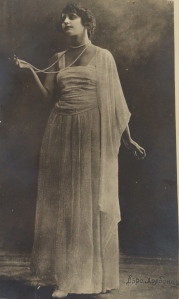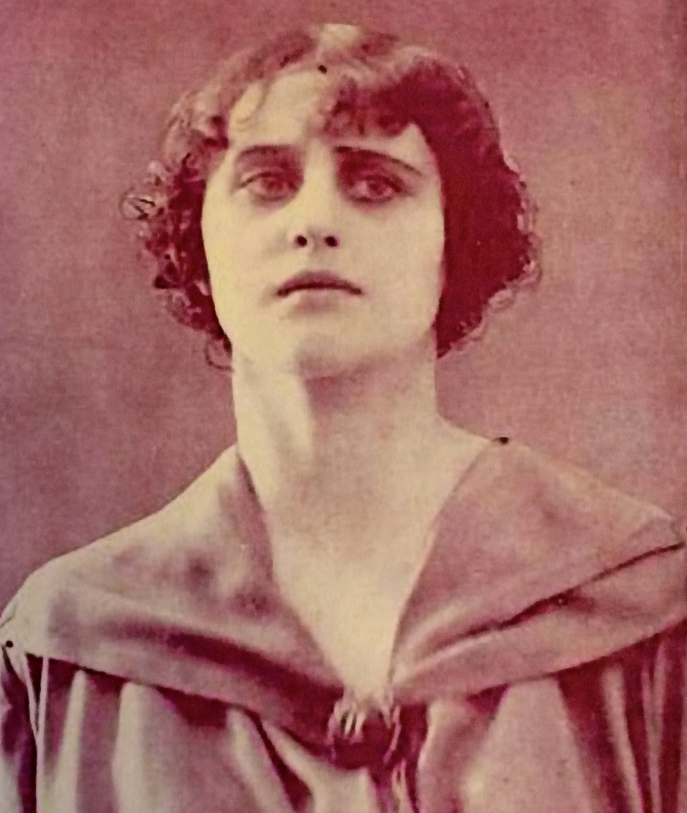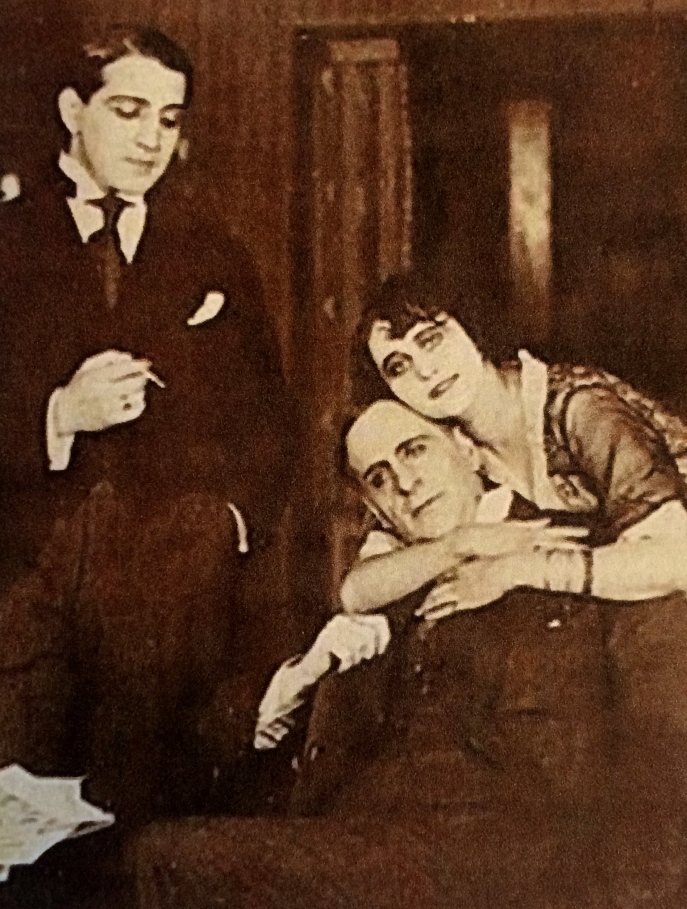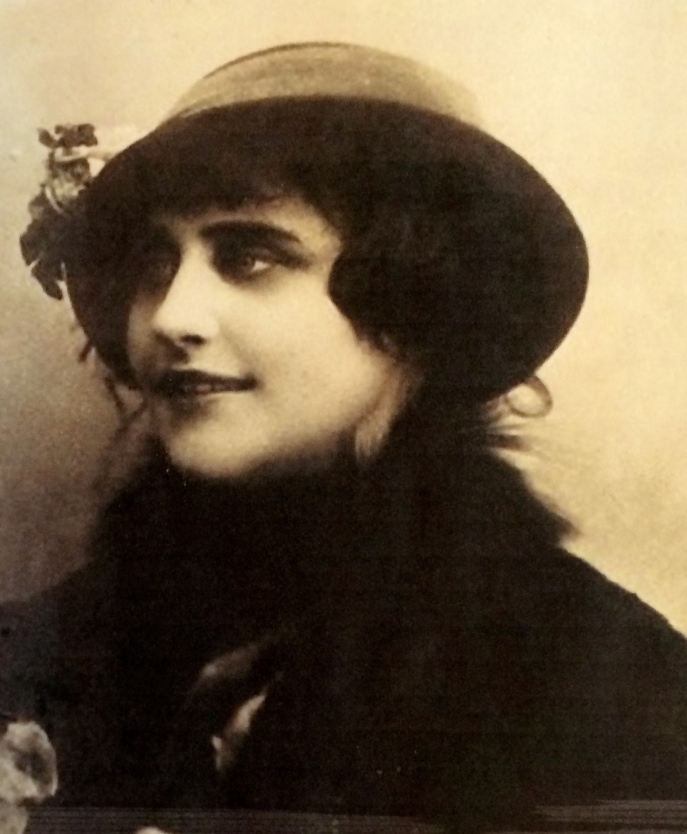 When my mother died at the end of November 1993, she left among her effects an old photograph, mounted on board, of a young woman in a long dress and long pearls, gazing up at the heavens with a tragic expression. The woman did not appear to be a family member. But who was she? Why was she so important to my emigrating mother, aged eighteen, that she had chosen to bring her photo out of the nascent Soviet Union as one of the few personal possessions she was allowed to take with her? And why had she kept the woman’s picture till she died? There were no photographs of her own mother surviving among her effects. What made the lady with the pearls so special?
When my mother died at the end of November 1993, she left among her effects an old photograph, mounted on board, of a young woman in a long dress and long pearls, gazing up at the heavens with a tragic expression. The woman did not appear to be a family member. But who was she? Why was she so important to my emigrating mother, aged eighteen, that she had chosen to bring her photo out of the nascent Soviet Union as one of the few personal possessions she was allowed to take with her? And why had she kept the woman’s picture till she died? There were no photographs of her own mother surviving among her effects. What made the lady with the pearls so special?
The photo bore a name at the bottom printed in Cyrillic lettering. But at the time I found it, I didn’t know how to read all the letters. Moreover, even if I had been able to piece together a name for this woman, in 1993 the internet was a mere fledgling. Very few personal computers were then connected to it. Search engines were a thing of the future. The woman remained a mystery.
Until a year ago, when I embarked on private Russian lessons with a tutor. (Not, I assure you, to ascertain the identity of the mystery woman. I was searching for the sound of my “roots,” having conveniently forgotten that if there is such a thing, mine are not really Russian but Jewish.) It was an effort doomed to failure. I hate to admit I’m too old for anything. But I was certainly too old — or else insufficiently motivated, roots or no — to retain the unbelievably complicated conjugations and declensions of almost every single word in this maddeningly elusive language, despite valiant efforts and the painful expenditure of $35 an hour. However, before giving up, I did learn to identify those funny-looking letters in the Cyrillic alphabet. Now I could laboriously decipher the mystery woman’s name printed on my mother’s card. It was — as you learned in a previous post — Vera Kholodnaya.
And now also there was an almost omniscient internet available to me. Perhaps some answers at last? Given the little my mother had told me about her girlhood and its pleasures in wartime Baku, I had thought Vera would turn out to be a famous and idolized soprano or else a stage actress of renown. Not a bit of it. My teen-age mother had been spending whatever spare time and few rubles she had at the movies!
Vera Kholodnaya was the biggest silent screen star Imperial Russia had ever known! Her large gray eyes and often extravagant costumes made her a fascinating enigma for Russian audiences everywhere. By the time of the Russian Revolution, a new Kholodnaya film was released every third week. One of them (“At the Fire Side”) was so popular it was being run in cinemas as late as 1924, six years after she died — when the Soviet authorities ordered many of her films destroyed. (Too bourgeois?)
Vera’s specialty was melodrama. In the photo below, she is suffering both anguish for the man in her arms (played by Ivan Khudoleev), a circus performer who has fallen from his airborne perch, and humiliation by the suave suitor at the left (played by Ossip Runitsch), a wealthy man who desires her and whom she rejected before Ivan fell. Now she has been forced to accept money from Ossip so that Ivan can have medical help. My recognition of Cyrillic letters does not extend far enough for me to read the words of dialogue printed on the screen in silent movies, so I don’t know what price Ossip has extracted in exchange for his filthy lucre. But you can imagine. Nonetheless, Vera is clearly happy that Ivan will be made well again, despite what is to come at Ossip’s hands. Thrilling, isn’t it?
The scene is from her last picture, and three minutes of it survives on YouTube, if you’re interested in details of how Ossip was rejected, how Ivan fell, and Vera’s look of shame at accepting the money. It’s called “Molchi, grust… molchi.”
My mother was just fourteen when Vera died, and didn’t leave Baku with Vera’s photograph in her luggage until four years later. However, Vera’s life and death may have been even more melodramatic and appealing to a romantic young girl than the stories in her films. She was only seventeen when she married Vladimir Kholodny, said to be one of the first Russian car racers — be still, my beating heart! — and the editor of a daily sport newspaper. Vera would often accompany him in the car when he raced, many of the races resulting in road accidents. But after he was drafted to fight in World War I, she was also rumored to have begun an affair with the French ambassador! And there’s no smoke without fire, right?
Official government records state that she died at the age of 25 of Spanish flu during the epidemic of 1918-1919 — a tragic end right there. But others believe she was poisoned by the French ambassador with whom she was having the affair after he became suspicious that she was a spy for the Bolsheviks! Talk about your melodrama! When Alexander Vertinsky, a well-known film and song writer who venerated her and was a frequent visitor to her house, learned of her death (however it occurred), he wrote a poignant song in her honor that my young mother may have heard: “Your fingers smell of church incense, and your lashes sleep in grief….” And a director with whom Vera had frequently worked filmed her large funeral, which seems to have become her best-known film.
She was also, in some photographs, quite lovely:
So now I understand why my mother, whose head was full of romantic dreams for longer than she may have ever been willing to admit, might have brought a celebrity photo with her to America. It was a photo of Vera Kholodnaya, the silent screen star who had led such a brief and dazzling life of romantic drama and tragedy.
But why did she keep the photograph of Vera till she died, when she almost certainly threw out any photographs of her own mother she may have had, together with all her mother’s letters, after she learned of her death during World War II? I think I know the answer to that one now, too. Her mother’s face may have been too painful to keep, once she was gone. Whereas she didn’t care at all about Vera after a while, and just forgot she was there.



